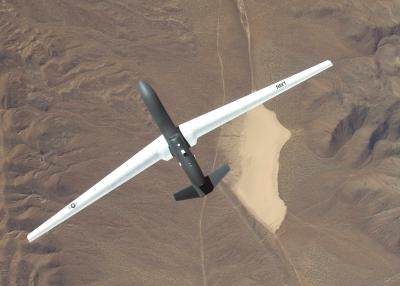Sun, Jan 26, 2014
Northrop Grumman-Built System Works As Eyes To U.S. Navy Fleet Commanders In The Middle East
The Northrop Grumman Corporation-built unmanned demonstrator aircraft used for maritime surveillance missions by the U.S. Navy surpassed 10,000 combat flying hours supporting intelligence-gathering missions in the Middle East. The Broad Area Maritime Surveillance Demonstration (BAMS-D) aircraft are currently flying 15 missions a month and allow fleet commanders to identify and track potential targets of interest using a specialized suite of surveillance sensors.

"BAMS-D has been extremely successful in providing a strategic picture to carrier and amphibious battle groups as they move through areas where we need more awareness," said Capt. James Hoke, Triton program manager with Naval Air Systems Command. "The BAMS-D aircraft started a six-month deployment in 2009 to demonstrate a maritime surveillance capability. Since then, they have continued to be used and have truly found their role in helping secure the safety of the fleet."
Based on the Global Hawk unmanned air system (UAS) designed for land surveillance, the BAMS-D systems were modified to work in a maritime environment. The aircraft regularly fly missions more than 24 hours long at high altitudes. The Navy is also using BAMS-D to understand how to best use the new surveillance capabilities for the MQ-4C Triton UAS. Currently under development, Triton uses an entirely new sensor suite optimized for a maritime environment.
"We've designed Triton to carry sensors that can monitor large ocean and coastal areas with a 360-degree field of view," said Mike Mackey, Triton program director with Northrop Grumman. "Coupled with anti-ice/de-ice capabilities and some structural strength improvements, the system will operate in a variety of weather conditions while providing a greatly improved surveillance picture to fleet commanders."
The Navy's program of record calls for 68 Triton UAS to be built.
(Image provided by Northrop Grumman)
More News
Aero Linx: Model Aeronautical Association of Australia MAAA clubs are about fun flying, camaraderie and community. For over 75 years, the MAAA has been Australia’s largest fl>[...]
Touchdown Zone Lighting Two rows of transverse light bars located symmetrically about the runway centerline normally at 100 foot intervals. The basic system extends 3,000 feet alon>[...]
“Discovery and innovation are central to our mission at Virgin Galactic. We’re excited to build on our successful record of facilitating scientific experiments in subor>[...]
How To Get A Story On Aero-TV News/Feature Programming How do I submit a story idea or lead to Aero-TV? If you would like to submit a story idea or lead, please contact Jim Campbel>[...]
Student Pilot Reported That During Rotation, “All Of A Sudden The Back Of The Plane Kicked To The Right..." Analysis: The student pilot reported that during rotation, “>[...]
 ANN's Daily Aero-Linx (05.02.24)
ANN's Daily Aero-Linx (05.02.24) ANN's Daily Aero-Term (05.02.24): Touchdown Zone Lighting
ANN's Daily Aero-Term (05.02.24): Touchdown Zone Lighting Aero-News: Quote of the Day (05.02.24)
Aero-News: Quote of the Day (05.02.24) ANN FAQ: Contributing To Aero-TV
ANN FAQ: Contributing To Aero-TV NTSB Final Report: Cirrus Design Corp SR20
NTSB Final Report: Cirrus Design Corp SR20



